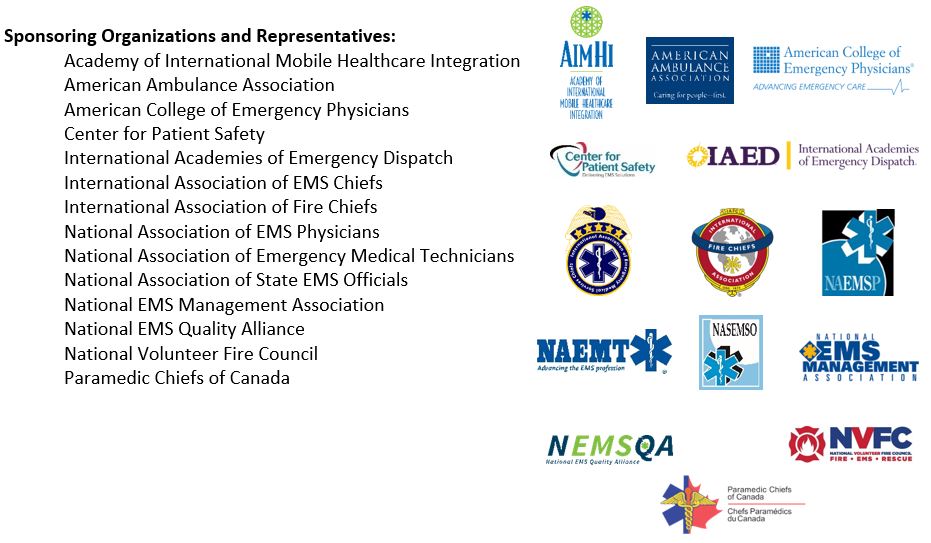In an outstanding demonstration of collaboration and focus on provider, patient, and community safety, 14 national and international associations have partnered on the release of a Joint Statement on Lights & Siren Vehicle Operations on Emergency Medical Services (EMS) Responses.
This level of agreement on any topic in EMS delivery is exceptionally rare, and we are grateful to the leaders of these associations for coming together to recognize the importance of balancing provider, patient, and community safety, with patient outcomes and community expectations!
The link to the full statement is below, and the key provisions of the statement are here.
The sponsoring organizations of this statement believe that the following principles should guide L&S use during emergency vehicle response to medical calls and initiatives to safely decrease the use of L&S when appropriate:
- The primary mission of the EMS system is to provide out-of-hospital health care, saving lives and improving patient outcomes, when possible, while promoting safety and health in communities. In selected time-sensitive medical conditions, the difference in response time with L&S may improve the patient’s outcome.
- EMS vehicle operations using L&S pose a significant risk to both EMS practitioners and the public. Therefore, during response to emergencies or transport of patients by EMS, L&S should only be used for situations where the time saved by L&S operations is anticipated to be clinically important to a patient’s outcome. They should not be used when returning to station or posting on stand-by assignments.
- Communication centers should use EMD programs developed, maintained, and approved by national standard-setting organizations with structured call triage and call categorization to identify subsets of calls based upon response resources needed and medical urgency of the call. Active physician medical oversight is critical in developing response configurations and modes for these EMD protocols. These programs should be closely monitored by a formal quality assurance (QA) program for accurate use and response outcomes, with such QA programs being in collaboration with the EMS agency physician medical director.
- Responding emergency agencies should use response based EMD categories and other local policies to further identify and operationalize the situations where L&S response or transport are clinically justified. Response agencies should use these dispatch categories to prioritize expected L&S response modes. The EMS agency physician medical director and QA programs must be engaged in developing these agency operational policies/guidelines.
- Emergency response agency leaderships, including physician medical oversight and QA personnel should monitor the rates of use, appropriateness, EMD protocol compliance, and medical outcomes related to L&S use during response and patient transport.
- Emergency response assignments based upon approved protocols should be developed at the local/department/agency level. A thorough community risk assessment, including risk reduction analysis, should be conducted, and used in conjunction with local physician medical oversight to develop and establish safe response policies.
- All emergency vehicle operators should successfully complete a robust initial emergency vehicle driver training program, and all operators should have required regular continuing education on emergency vehicle driving and appropriate L&S use.
- Municipal government leaders should be aware of the increased risk of crashes associated with L&S response to the public, emergency responders, and patients. Service agreements with emergency medical response agencies can mitigate this risk by using tiered response time expectations based upon EMD categorization of calls. Quality care metrics, rather than time metrics, should drive these contract agreements.
- Emergency vehicle crashes and near misses should trigger clinical and operational QA reviews. States and provinces should monitor and report on emergency medical vehicle crashes for better understanding of the use and risks of these warning devices.
- EMS and fire agency leaders should work to understand public perceptions and expectations regarding L&S use. These leaders should work toward improving public education about the risks of L&S use to create safer expectations of the public and government officials.

Joint Statement on Red Light and Siren Operations with Logos - FINAL.pdf